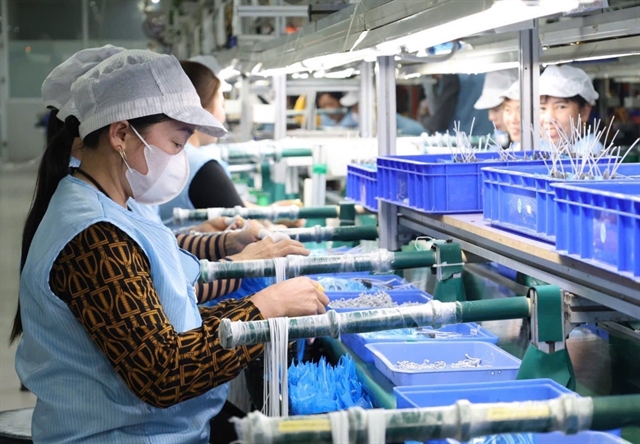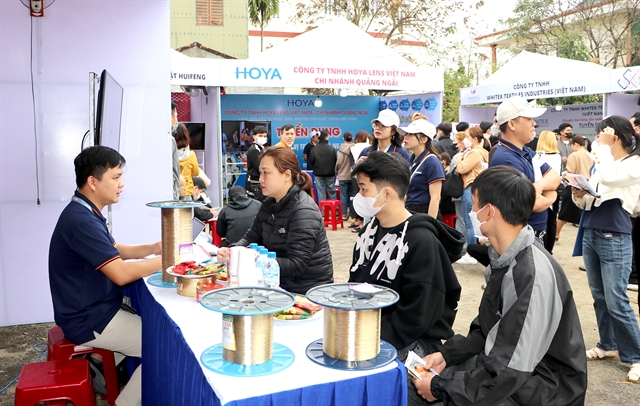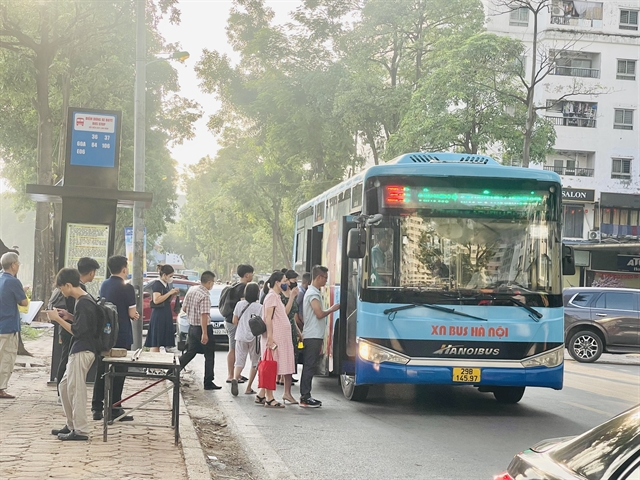 Economy
Economy

 |
| Job seekers at an employment fair in the central province of Quảng Ngãi in early February. — VNA/VNS Photo |
HÀ NỘI — The labour market is seeing rising recruitment demands following the Tết (Lunar New Year) holiday as businesses increase efforts to expand operations.
According to the deputy director of Hà Nội Centre for Employment Services (HCES), Vũ Quang Thành, data from the first job fairs after Tết show that labour demands in the capital remain stable.
The situation could be attributed to the well-received benefit policies from the employers, unions and local authorities, which motivate workers to return to work after the week-long holiday. The number of people applying for unemployment benefits has also declined.
Over January 2025, Hà Nội saw over 19,300 job seekers offered employment, an increase of 24.8 per cent compared to the same period last year.
Forecasts show that information technology, trade services and tourism are the sectors with the highest recruitment demands in the coming months.
HCM City’s deputy director of the Department of Labour, Invalids and Social Affairs, Lương Thị Tới, said that the city had counted between 50,400 to 55,500 job openings after Tết, with the highest demands coming for posts in footwear and textiles sectors, administration, mechanics, transport and storage services, accounting, auditing and marketing.
About 48.77 per cent of the job openings were targetting workers aged 27 to 35, while this figure for the group aged below 26 was about 28.77 per cent.
Tới explained: “After Tết is the time when businesses strengthen recruitment to make up for the workforce who left in search of better opportunities. Employers could also be expanding their workforce for production and business growth.
“Compared to 2024, the labour demand after Tết in 2025 increases by about 7 per cent.”
The Centre for Employment Services HCM City received 5,463 applications for unemployment benefits in January, a 44 per cent year-on-year decrease. This figure showed that the local labour market was relatively stable with a low turnover rate.
Abundant opportunities
Multiple job fairs and recruitment events are organised across the country after the Tết holiday to meet the demands of employers.
The employment service centre in the northern city of Hải Phòng reported 3,552 job openings at 38 businesses in the locality. In its industrial zones, 60 employers are looking to hire about 4,500 workers.
Meanwhile, the Department of Labour, Invalids and Social Affairs of Nghệ An Province in the central region plans to host job fairs at its three industrial parks – VSIP, Nam Cấm and Hoàng Mai 1.
The southern province of Đồng Nai is also seeing a rise in recruitment demands due to the large number of orders at the beginning of 2025. The provincial employment service centre reported dozens of companies participating in each of its job fairs, but the number of applicants is low.
Tens of thousands of job openings are also accepting applications on online recruitment platforms such as VietnamWorks, CareerViet and TopCV.
Fluctuations expected
According to the latest report by the Ministry of Labour, Invalids and Social Affairs (MoLISA), the pre-Tết labour market saw a surge in demand for temporary workers, as businesses ramped up production for the holiday.
Fluctuations can be expected following Tết as some workers may not return to their positions due to a number of changes, such as relocation. This can lead to temporary labour shortages and high demand for new hires in Q1-2025, especially in manufacturing and services.
In addition, a substantial number of workers will move to private businesses due to the restructuring of public agencies, posing greater pressure on employment services.
The former deputy director of MoLISA’s Department of Employment Lê Quang Trung, said that with improvements in compensation and benefits, employers had fostered stronger bonds with their employees.
These measures were part of the employers’ effort to maintain employment and income for workers, thereby raising their retention rates and contributing to the labour market stability. — VNS




